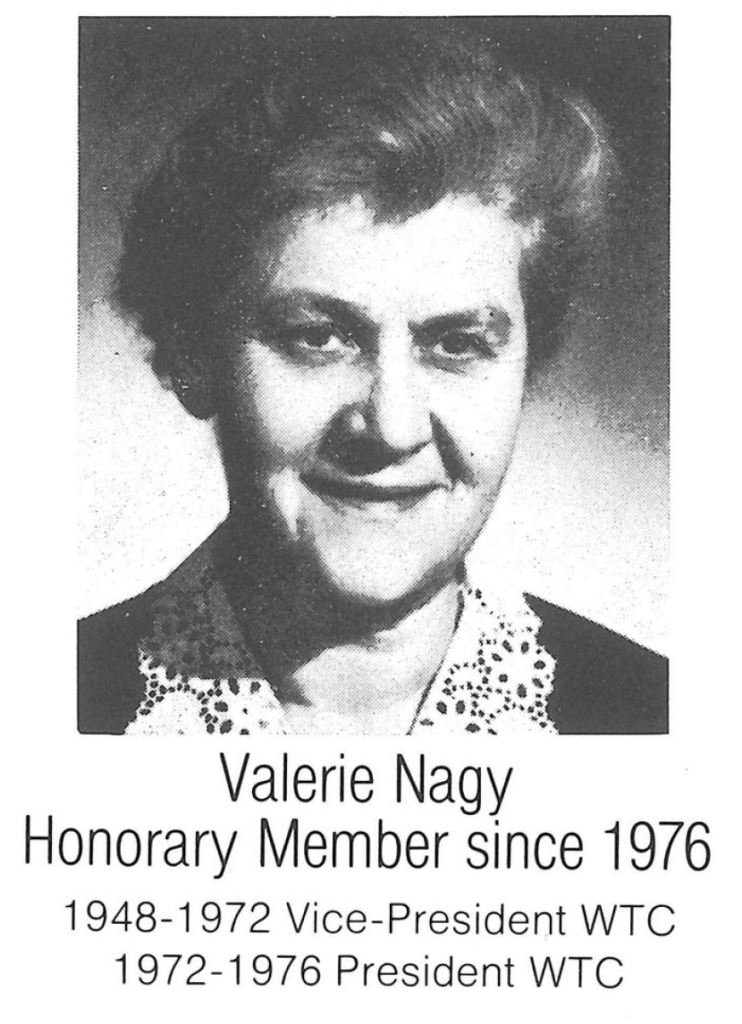What were the 1968 Olympics like from the perspective of a Women’s Technical Committee member? Well, the Vice President, Valerie Nagy of Hungary, wrote an article for Olympische Turnkunst, in which she summarized her views.
Not surprisingly, she pointed out that there was some “clever teamwork” among the judges.

Valerie Nagy-Herpich Reports from Mexico City
The Compulsories may have been a little too difficult, in particular those for the unevens on which even the best performers did not show what had been expected. Kutchinskaja’s fall from the apparatus and the failure of other first-class performers from Japan, the CSSR, Hungary in addition to those of almost all other teams prove the difficulty of the exercise. The vault, which gymnasts had feared, went off better.
Floor: A flic-flac and other acrobatic moves had for the first time been included in the compulsory. A long exercise very difficult in its composition with turns requiring some ballet training and with soft movements of body and arms was well executed by the best eight teams. The music keeps the exercise one piece and helps gymnasts to cope with its length. Much personality, capacity for expression and becoming one with the music could be seen.
Beam: It remains the apparatus of scare. The compulsory required much confidence, spring, womanly softness, and discipline of nerves and muscles. All teams being very nervous it was not surprising that high marks were rare: Kutchinskaja 9.80, Caslavsa 9.65, Metheny (USA) 9.60, only one 9.55, and six 9.50s. It is possible this compulsory was not given due care in training.
Women’s Optionals: Being already nervous the first day the women were even more so on the second. The temper of competitors, judges, and spectators reached [a] boiling point in the afternoon. The 18,000 people present followed performances with the fervour customary with southern people, cheering their favourites and sometimes voicing their discontent with the scores.
The vault often led to disagreement among the judges, necessitating several discussions. Performances on the whole were mediocre, a few really good vaults excepted. It was the first time vaulters had to announce the number of their vault. It thus happened that number and vault often did not tally, which made things more difficult for the judges.
Unevens: The new type of unevens with bracing device has changed the technique and structure of routines. They have gained in swing and fire and have become more interesting. There were new ideas and moves. The Japanese women, who mastered unbelievable difficulties with good technique, must be mentioned in this context. But, unfortunately, they were not properly rewarded by the judges. Novelties executed with faultless technique in well composed routines were also shown by the East German women. THe Czechoslowakian [sic] and Russian teams performed in their usual dynamic style without taking risks. New and well executed moves were also seen with other teams and generally speaking it can be stated that great progress has been made.
Balance Beam: The tendency is towards acrobatics. The great difficulty lies in the integration of acrobatics, good composition, and smooth flow of womanly movements. Teams who were not up to those requirements remained in the background. On the whole it must be said that work on the beam lacked fluency and contained too many little breaks. Never have Olympic Games seen so many falls from the beam.
Floor: Floorwork, which has become our finest event through the accompanying music, was followed by the audience with bated breath. The acrobatic elements, among which there were many full-twist somersaults, were performed with great precision. The dance movements emphasizing the womanly note with deep expression delighted everybody. Generally speaking national Associations have found the right way. The judges’ work was not always satisfying. There were frequent attempts to veil lack of objectivity by clever teamwork. In spite of all that has so far been done we have to recover much lost ground in the training and education of judges.
(Olympische Turnkunst, 1968, N. 6)
Note: Olympische Turnkunst provided the original German (“Valery Nagy-Herpich berichtet aus Mexico City”), as well as English and French translations. The English translation had an error. It said that there were six 9.55s on beam, but in the German original, it said that there were six 9.50s. I’ve corrected the error in the English translation above.
More on 1968